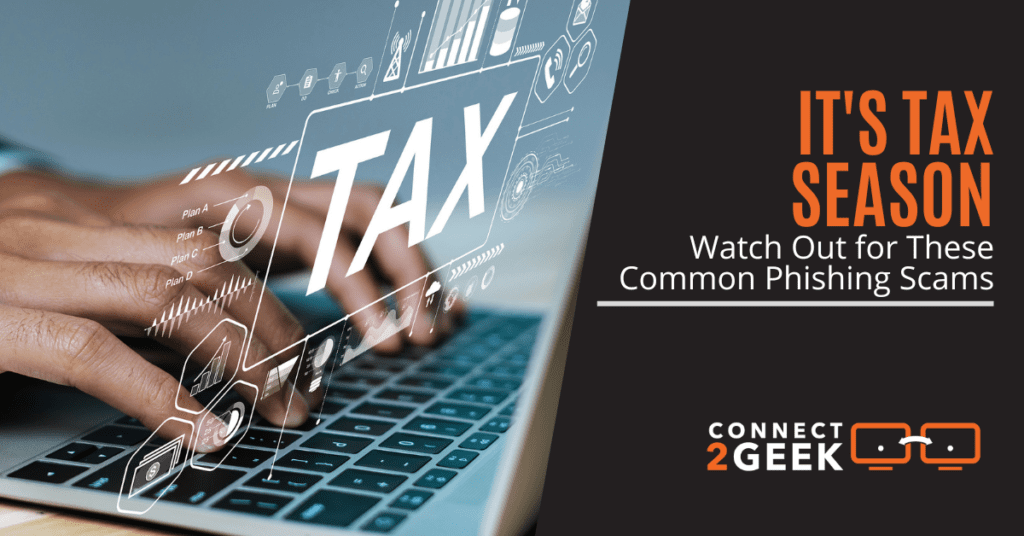
The tax season can be challenging. Just add a pinch of tax season phishing scams, and an anxiety attack is just around the corner. You already know that nothing about this world is definite except for phishing emails and taxes.
A report by CyberTalk states that about 214,345 different phishing sites were discovered in 2021. Cybercriminals are gearing up to take advantage of this tax season as many taxpayers are hurrying to submit their forms.
The tax season is a juicy opportunity for scammers and hackers to trick individuals into unintentionally turning over their PII (Personal Identifiable Information), money, and credentials. People are easy to become victims of tax season malicious tricks. And besides, the tax authorities are among the few organizations to whom you would voluntarily disclose your details and who have a good cause to request it.
It’s not unusual to be deceived by an email that appears to be from your state tax office and states that you have unpaid taxes. This article will highlight and discuss the common phishing scams people fall for and how to avoid them. If you’ve once been a victim, please don’t allow it to repeat itself.
The Common Types of Phishing Scams
Below are some of the most prevalent phishing scams you need to know:
Regular Phishing
A text or an email that appears to be from the tax office or some other reliable source but is actually from a fraudster attempting to trick you into falling for their trap is known as a phishing scam.
If you open a file or click on it, click, the malicious message may state that there’s a problem with your tax or that you are receiving a higher return than what you anticipated. Falling for that message and clicking the attachment or link, you risk unintentionally installing malware or giving your details to a fraudster.
Spoofing
Another method used by cybercriminals to steal your personal information is spoofing. They accomplish this by using an authentic source—such as an email address or website—as their own. This technique is occasionally used in regular phishing scams.
A malicious email from a cybercriminal may contain a false website link that’ll take you to a fake version of the site you thought you were visiting. For instance, you can assume you’re on the official tax website when you’re on a spoof asking for your details so hackers can steal them.
Ensure the application and any accompanying URLs are authentic before installing or launching software or programs if you submit your taxes via online service. By checking the CRA’s database of approved tax software, you could determine if your tax program is reliable.
Rather than clicking on any link, ensure the website you’re on is legitimate by pasting the link into your search box. Never open a file or go to a website that appears suspicious.
Spear Phishing
Similar to regular phishing, spear phishing is hyper-targeted. That implies that cybercriminals will use details they discover online about you to help their phishing effort look even more convincing.
When it concerns taxes, spear phishing may be applied to make phishing attacks even more difficult to detect. Any personal details about you that a cybercriminal discovers online will be used to tailor their message to you. To ensure their message appears more genuine, they might be aware of your name (full name), date of birth, employer, address, or other information.
It’s crucial to carefully double-check downloads and links before you open them, regardless of whether the message contains genuine details about you. However, if you choose not to, your device may become infected with malware, or your online privacy may be compromised.
Practical Ways to Prevent Phishing Scams this Tax Season
Here are a few simple strategies to steer clear of phishing scams during this tax season and beyond:
Hover over email links before clicking on them
There are various types of fake links. Occasionally they appear to be valid web addresses. However, when you move your cursor over them, the genuine URL shows, which indicates where you’re visiting. In other instances, the URL may be slightly misspelled to confuse you. For example, can you differentiate between 1RS.gov and IRS.gov?
Be extremely careful when opening email attachments
Phishing emails contain either dangerous attachments or false links. There’s a chance that an email with a file you receive, even from tax authorities, contains malware. Additionally, it would help if you exercise caution while opening files, even from well-known senders.
Verify a sender’s address
Hackers can conceal their email addresses to make it appear that a reliable source is sending the message. It might be a reputable organization, a well-known company, or someone you know. The sender’s address can be revealed if you hover over the address or open the email address.
Phishing scams can happen even without emails
Scammers can try to trick you into giving them your details by using phone calls, social media posts, and instant messaging. Exercise extreme caution with who you disclose your personal information.
Don’t reply to threats in emails
Your account would never be threatened with termination or punishment with just a few hours’ notice via an email from any reputable service or tax authority. Trying to frighten individuals into taking action is an effective hacking technique.
Make email verification a habit
An email doesn’t need to appear suspicious to convince you to verify it. Ensure you make email verification/inspection a routine.
Protect Your Data from Phishing Scams with Connect2Geek
Our goal has constantly been to meet our client’s technological needs as quickly as possible. At, Connect2Geek, we’re a full-service IT provider you can trust to help protect and maintain your data, server, network, and computer.
Need help? Contact us today!
